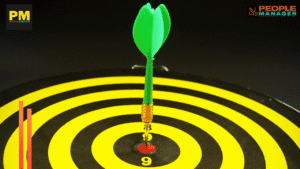The Nuances of Performance Management: The Role of KRA’s in Employee Engagement
A well-designed KRA System connects management with every individual, from top to bottom. Where KRAs are strong, hardliners motivated by "organizational philosophy," they progress from the mission statement to the management principle via the individual spirit.

Performance management is a vital component of an organization’s success. It entails assessing and developing employees’ skills and performance to ensure they are aligned with the company’s objectives. Key Result Areas are a critical component of good performance management. However, most KRA design specialists link the KRAs to individual tasks to be completed. However, KRA is a chain that aligns organizations from individual to organization, creating a pipeline to deliver organizational goals consistently by individuals and achieve them by the organization as a whole.
A well-designed KRA System connects management with every individual, from top to bottom. Where KRAs are strong, hardliners motivated by “organizational philosophy,” they progress from the mission statement to the management principle via the individual spirit.
Additional add-ons provide possibilities for growth via:
1. Performance appraisal
2. Training Needs Analysis
3. Succession Planning.
4. Variable Pay Program
Understanding KRAs
KRAs are a set of responsibilities that an employee is expected to perform. They provide a clear framework for assessing an employee’s performance. KRAs are typically aligned with the strategic goals of the organization, ensuring that each employee’s efforts contribute to the overall success of the company.
KRAs and Employee Engagement
KRAs play a significant role in employee engagement. When employees understand their KRAs, they have a clear understanding of what is expected of them. This clarity can lead to increased job satisfaction, motivation, and engagement.
Moreover, KRAs provide a basis for feedback and recognition. When employees meet or exceed their KRAs, they can be recognized and rewarded, further enhancing their engagement and motivation.
Reinventing Performance Ranking
Traditional performance ranking systems often rely on a hierarchical approach, where employees are ranked against each other. This method can create a competitive environment that may not be conducive to collaboration and team work.
A new approach to performance ranking involves evaluating employees based on their achievement of their KRAs. This method focuses on individual growth and development, rather than comparison with others. It allows for a more personalized approach to performance management, where employees are evaluated based on their unique roles and responsibilities.
A New Way to Evaluate Talent
This reinvented approach to performance ranking offers a new way to evaluate talent. By focusing on KRAs, organizations can assess an employee’s skills and performance in a more objective and fair manner.
This method also allows for a more comprehensive view of an employee’s performance. It takes into account not only the results achieved, but also the effort and strategies used to achieve those results. This holistic approach to performance evaluation can lead to a more accurate understanding of an employee’s abilities and potential.
Conclusion
In conclusion, KRAs play a crucial role in performance management and employee engagement. They provide a clear and objective framework for evaluating performance, enhancing employee engagement, and reinventing performance ranking. By adopting this approach, organizations can foster a more collaborative and growth-oriented work environment, ultimately leading to improved organizational performance.
Register for the live workshop on The Nuances of Performance Management: The Role of KRA’s in Employee Engagement
Value our content… contribute towards our growth. Even a small contribution per month would be of great help to us. Since our establishment, we have been serving the industry through daily news and updates.
Our content is free for all, and we plan to keep it that way
Support the People Manager. Pay Here









